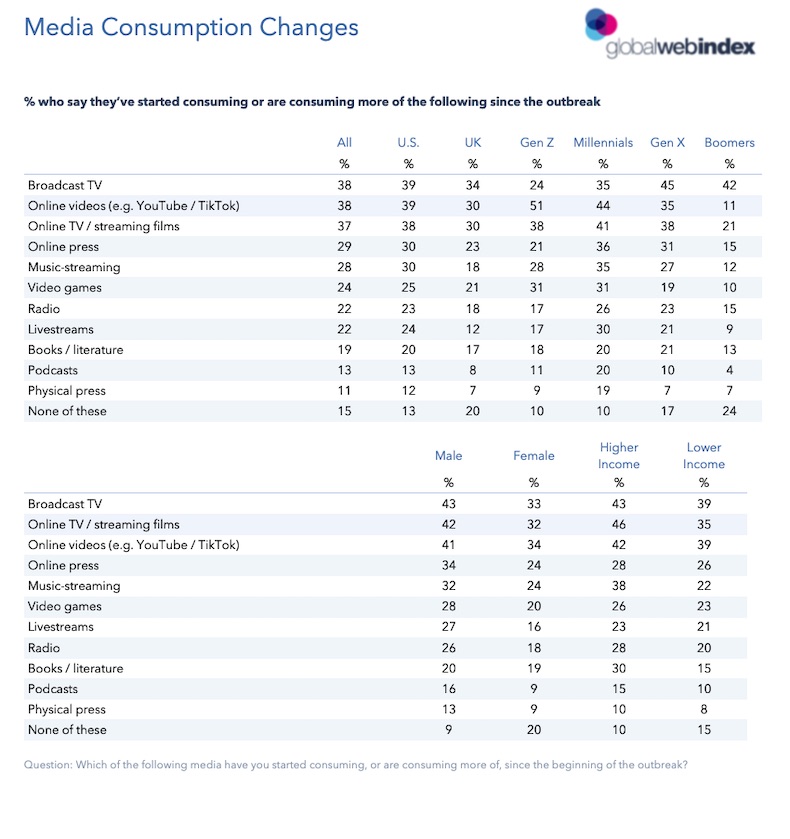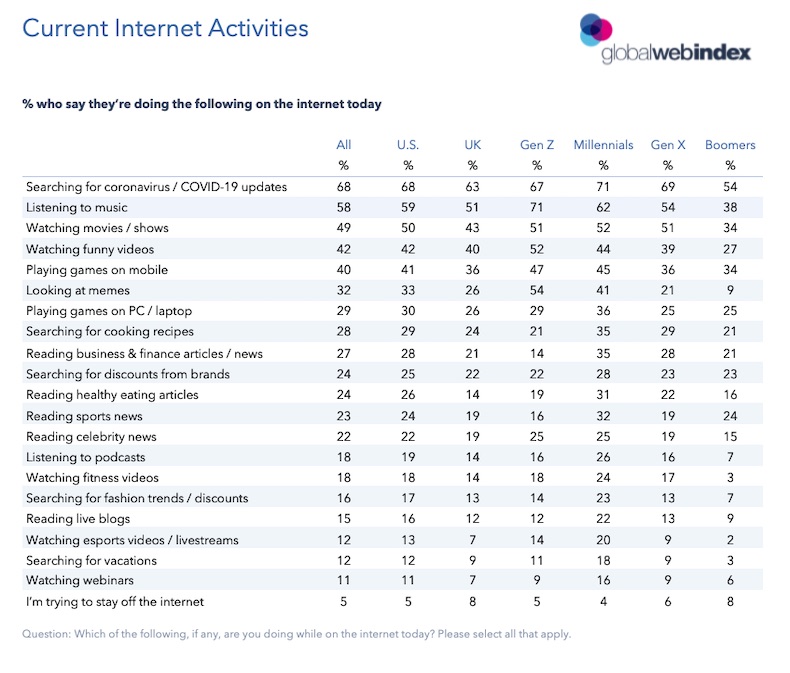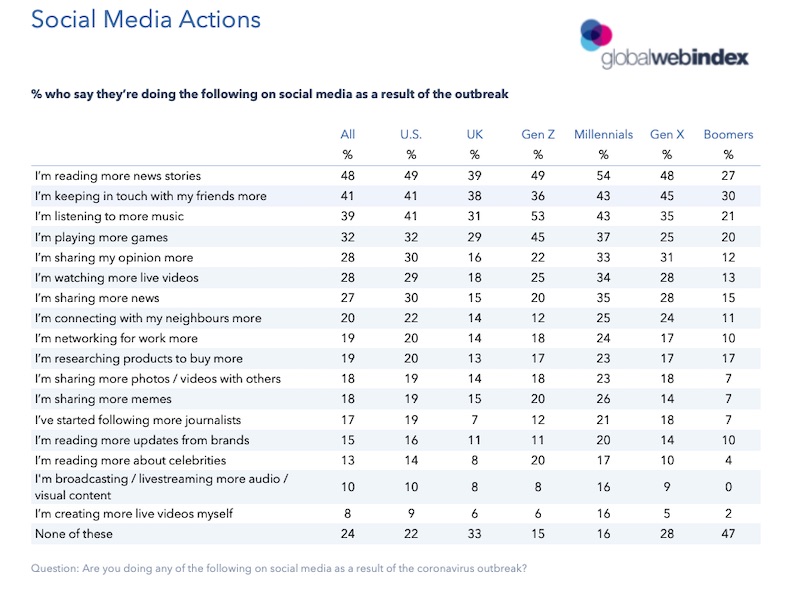Some 87% of US consumers and 80% of UK consumers say they are consuming more content across media channels because of the COVID-19 outbreak, according to recent research from GlobalWebIndex.
The report was based on data from a survey conducted March 25-30, 2020, among Internet users ages 16-64 in the United States (2,218 respondents) and the United Kingdom (1,726 respondents).
The biggest increases in consumption have been in broadcast television, online video, and online television streaming, the researchers found.
Some 38% of respondents say they have been watching more broadcast TV since the outbreak, 38% say they have been watching more online video, and 37% say they have been watching more streaming TV shows and movies.
Media consumption changes driven by COVID-19 vary significantly based on age, gender, and income, the research found.
For example, Millennial and Gen Z respondents are much more likely to say they are watching more online videos than do Gen X and Baby Boomer respondents.
Men and respondents with higher income are more likely than women and respondents with lower income to say they have increased media consumption across channels because of COVID-19.

Internet Activity
Some 68% of respondents say they are searching for Coronavirus updates online, making it the most popular online activity across markets, income levels, gender, and most generations.
Gen Z is the exception: For it, listening to music online outranks searching for Coronavirus updates.

Social Media Actions
Some 49% of US respondents and 39% of UK respondents say they are reading more news stories on social media as a result of the COVID-19 outbreak, making it the primary motivator to use social networks across markets, gender, and income levels.
People are also using social media to keep in touch with friends more: 41% of US respondents and 38% of UK respondents say they are doing so.

About the research: The report was based on data from a survey conducted March 25-30, 2020, among internet users ages 16-64 in the United States (2,218 respondents) and the United Kingdom (1,726 respondents).




